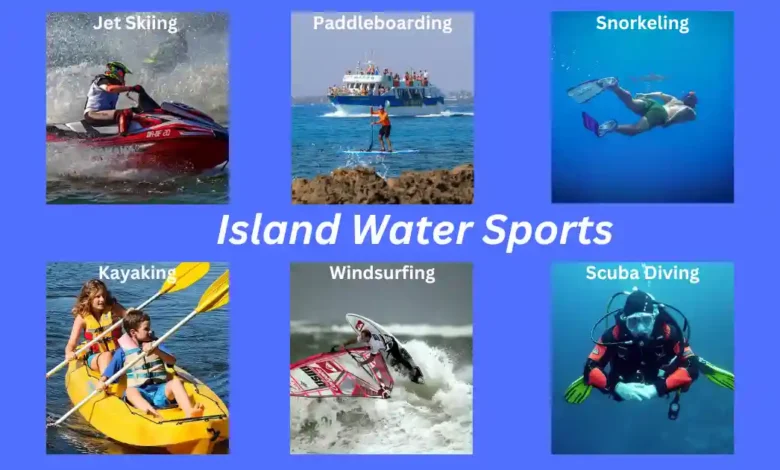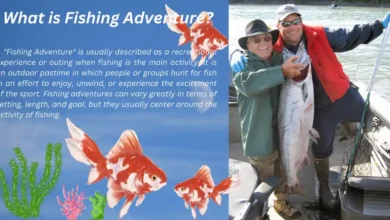
Island Water Sports
Water sports on islands provide an exciting getaway to paradise, but they also carry a responsibility to protect the pristine ecosystems that make these places so alluring. In this article, we examine the contradictory character of island water sports, looking at how they might benefit the local economy and conservation efforts while also posing environmental problems and also discuss Island Water Sports Equipment’s here.
We explore the effects of water sports on island habitats, including both beneficial and detrimental effects on coral reefs and cultural preservation Join us as we negotiate this tricky relationship and learn how to take part in these activities without destroying the natural splendor of island vacation spots.
What is Island Water Sports?
Island Water Sports is a word used to describe organizations or pursuits associated with outdoor leisure and water sports on islands. These companies frequently provide services like gear rentals, instruction, escorted tours, and more for a variety of water sports activities, including surfing, windsurfing, paddleboarding, snorkeling, scuba diving, kayaking, jet skiing, and others. There are many establishments or enterprises devoted to offering these water-based activities to tourists and people at island destinations all over the world, especially those having access to oceans, seas, or other bodies of water.
Depending on the region and the business’s focus, several services and activities may be provided under the heading “Island Water Sports”. Taking advantage of the natural beauty and aquatic opportunities that islands provide, these activities are well-liked by visitors and can contribute significantly to the tourism industry on many islands.
Environmental Impact of Island Water Sports
Island water sports can have positive and negative effects on the delicate ecosystems of islands and the waterways around them, raising serious environmental concerns. Water sports enthusiasts can enjoy these settings’ beauty, but it’s essential to do so properly to ensure their long-term preservation. Here is a detailed examination of how island water activities affect the environment:
Positive Impact of Island Water Sports
- Economic benefits
- Awareness and sport
- Marine research
- Habitat restoration
- Responsible waste disposal
Economic benefits
Island economies frequently rely on tourism, and water sports are a major source of that industry’s income. This cash can help local communities and fund conservation initiatives.
Awareness and Support
People who enjoy water sports and see the beauty and fragility of island ecosystems may become supporters of conservation and help defend these areas.
Marine Research
Scuba diving and other water sports that give participants access to distant underwater settings can support marine research. Divers can help with monitoring and information gathering.
Habitat Restoration
To mitigate the harm caused by various environmental stressors, several island water sports organizations and enthusiasts take part in habitat restoration programs, such as planting mangroves or restoring coral reefs.
Reduced Carbon Emissions
Compared to motorized water sports like jet skiing or motorboating, non-motorized water activities like kayaking, paddle boarding, and sailing have a lower carbon impact. Encouragement of these eco-friendly, quieter solutions can aid in lowering greenhouse gas emissions.
Responsible Waste Disposal
Water sports firms can encourage clients to practice responsible waste disposal, ensuring that garbage and debris are disposed of correctly to avoid polluting water bodies and coastal areas.
Island water sports frequently engage the surrounding communities, which helps foster a sense of stewardship among those who depend on the environment.
Negative Impact of Island Water Sports
- Environmental Degradation
- Beach Erosion and Habitat Degradation
- Noise Pollution
- Safety risk
- Cultural Disruption
- Tourist crowds
- Culture Disruption
- Infrastructure Development
- Regulatory challenges
Environmental Degradation
Island water sports can impact the natural environment in various ways, including the destruction of coral reefs, the disruption of marine ecosystems, and the contribution to water pollution through the discharge of fuel and other pollutants.
Beach Erosion and Habitat Degradation
The frequent usage of beaches for water sports activities can result in beach erosion and habitat degradation, threatening the stability of coastal ecosystems.
Noise Pollution
Activities such as jet skiing and motorboating can cause significant noise pollution, disrupting marine life and disrupting the serenity and tranquility of coastal areas.
Safety Risk
Water activities can be hazardous, resulting in accidents, injuries, and even death. Rescue efforts can put a strain on local resources and emergency services.
Tourist Crowds
During peak seasons, popular water sports destinations can become congested, causing congestion, increased traffic, and inconvenience for locals and tourists.
Cultural Disruption
The commercialization of water sports and the flood of tourists can disturb island populations’ culture and way of life, resulting in social and cultural difficulties.
Infrastructure Development
In order to meet the needs of the water sports tourism business, some locations may experience rapid development, resulting in deforestation, habitat damage, and increased demands on resources such as water and electricity.
Regulatory challenges
Regulating water sports activities can be difficult, resulting in difficulties such as unauthorized operators, noise complaints, and disputes with other water users.
Island Water Sports Equipment
The term “island water sports equipment” refers to the gear and tools used for a variety of water-based recreational activities on islands. This gear is required for participants to enjoy activities such as surfing, snorkeling, scuba diving, paddle boarding, and others safely. The following are some examples of common types of island water sports equipment.
- Surfboards
- Paddleboarding
- Snorkeling and Diving Gear
- Kayaks
- Windsurfing and Kiteboarding Equipment
- Boats and Jet Skis
Surfboards
Surfing is a popular water sport in many island areas, and surfboards come in a variety of forms and sizes to accommodate varying skill levels and wave situations.
Paddleboarding
Paddleboarding (SUP) has grown in popularity on islands as a calm and pleasurable method to explore coastal waterways. Paddleboards and paddles are required for this sport.
Snorkeling and Diving Gear
Islands frequently provide excellent opportunities for snorkeling and scuba diving. Snorkel masks, fins, snorkels, and scuba diving equipment such as masks, tanks, regulators, and wetsuits are often utilized.
Kayaks
Kayaking is a versatile water sport that can be done in calm coastal waters or on more difficult open seas. Kayaks and paddles are required for kayaking excursions.
Windsurfing and Kiteboarding Equipment
Windsurfing and kiteboarding are popular sports on windy islands. These necessitate the use of specialized boards, sails, and kite equipment.
Boats and Jet Skis
Renting or owning boats and jet skis is widespread on islands for individuals who want to explore the waterways more thoroughly.
Conclusion
Island water sports provide both economic benefits and environmental challenges to these pristine destinations. While they help local economies and boost conservation awareness, they can endanger delicate ecosystems. Responsible practices and strong laws are required to ensure that we can enjoy these activities without jeopardizing the natural beauty of island holiday destinations.
You May Like:




